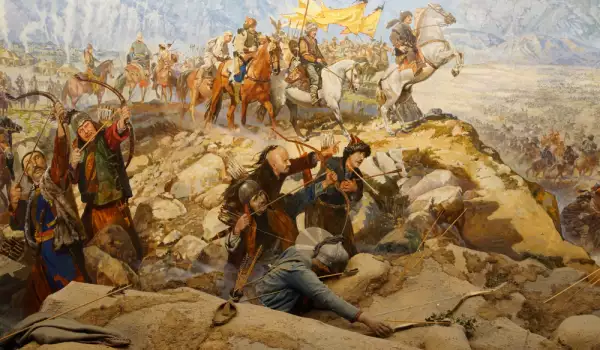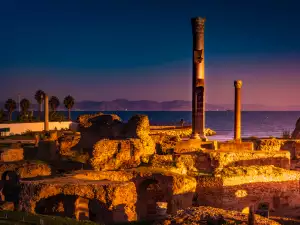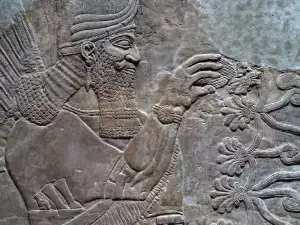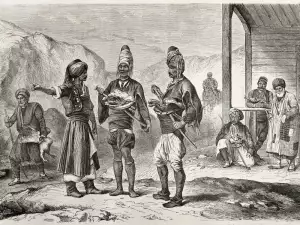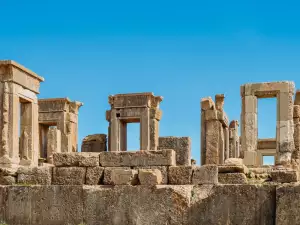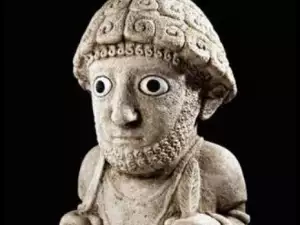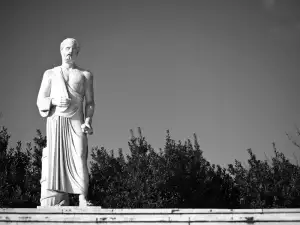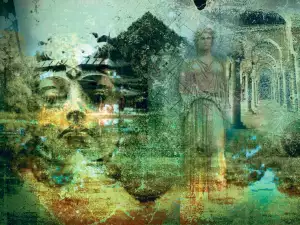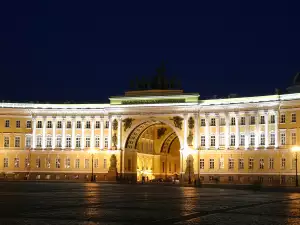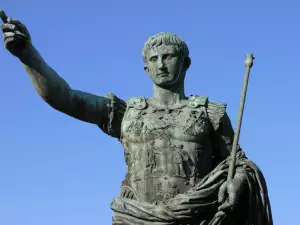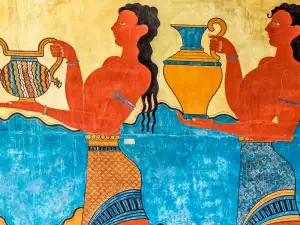The Hun tribes are part of the history of the world and more precisely of that of Europe. They appeared on the continent in the 2nd century and in the 5th established their state, led by their great ruler Attila. Considered ignorant barbarians, they achieved success for themselves that few have been able to. They are still remembered today. But, let's trace their history from the very beginning - from the Hun tribe to Attila and the Hun Empire.
Although the Huns inhabited our lands in the 2nd century, there is reliable information about their appearance only from the middle of the 4th century, when their traces were detected along the lower reaches of the Volga River. After several battles with other tribes, sometime between 400 and 410, the Huns settled in Pannonia. They impose control, thanks to previously unknown techniques, weapons and tricks. They create a reputation for themselves as a fierce, brave and merciless people who protect their own.
In general, there is no extremely accurate information about the Huns. There are legends of their exploits in China, where they invaded several times. It is believed that the Great Wall of China was built for protection by the tribes.
For many years, until the 4th century, the Huns split into small groups, each with its own leader. Their arrival in Europe was marked by the conquest of many territories, battles, bloodshed and glorious victories.
The Huns were strong warriors, because they received such training from childhood. In fact, their greatest strength was horses, which is why there was not a tribe member who was not an excellent rider. They began at the age of 3. It did not matter what they wore, it was necessary that their horses were adorned with all kinds of jewels, gold and silver. They raised animals and hunted for food.
These warriors, who experienced the pain at an early age when their faces were cut for tempering, were also excellent archers. They made them themselves from birch and bone. They were known for being able to hit an accurate shot from 70 meters away.
The Huns were not afraid of fighting, on the contrary. They used to attack first, by using a lasso to weaken the opponent's position or directly grab and drag them, until they dies. These ferocious people destroyed everything and everyone in their path, whether it was children, women or men. They took what they wanted and removed every obstacle in their way.
Quite logically, this fame of theirs made their opponents afraid.
After settling in Pannonia, the Huns subjugated the German tribes, even requiring them to pay taxes and appointing officials to collect them. Of course, there was a chief at the head of the tribe and that was Rua, who after his death was inherited by his nephews Attila and Bleda. At first, the warriors ruled together, but after Bleda also died (reportedly it was Attila who killed him), Attila continued alone. He did it quite successfully, because during his reign, the Huns became the strongest nation at that time.
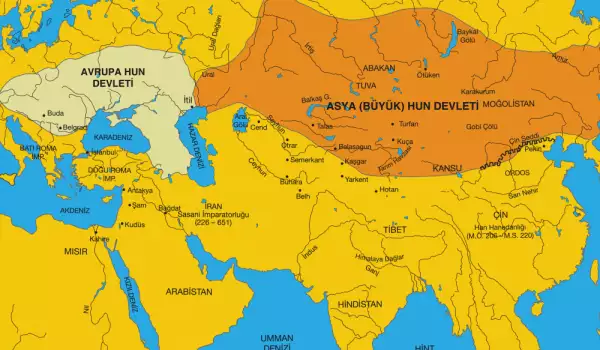
In the year 451, the Huns headed to Western Europe to conquer territories there as well, but their attempt was unsuccessful, because a number of armies stood in their way, which united forces against them. The event is known as the Battle of Chalons, where Franks, Burgundians, Romans and Visigoths oppose the Huns. In 452, however, Attila successfully ravaged northern Italy, even driving out the then-emperor Valentinian.
Attila died in 453 in Pannonia. The exact cause of his death is not known, it is only known that he was preparing for a march to Constantinople. During his reign, he greatly expanded the borders of the Hun state.
The collapse of the country comes after Attila's successor does not agree with his other two brothers. For this reason, the government is shaken and most of the tribes retreat and weaken their positions. No matter how hard they tried to hold their fortification, in 454 the united Goths, Gepids and Romans defeated the Huns in the battle of the Nedao River. The ruler Elak, the son of Attila, died in battle. The empire lasted only 6 years.
We offer you some interesting and little-known facts about Attila, whose name is still remembered today.
1. Besides being an amazing warrior, Attila was a well-mannered and educated man
No one associated the ferocity of the Huns with education. They were true barbarians who shouldered everything in their path. Attila, however, besides being second to none in skill, possessed a different education and character. He was supported by his relatives, received the necessary military education. In addition, Attila is believed to have had an excellent command of Latin and Gothic.
2. First step in ruling
When Attila came to power, the first thing he did was make peace with the Romans. The emperor of Rome at that time - Theodosius II, who agreed to pay 700 kg of gold annually, just so that the peace would not be disturbed in the countries. Only a few years after this decision, however, Attila judged that the people of the Roman Empire were not abiding by the terms of the treaty and took military action against them. Shortly before the Huns attacked, however, the emperor agreed to pay 2, 100 kg of gold each and so the battle was called off.
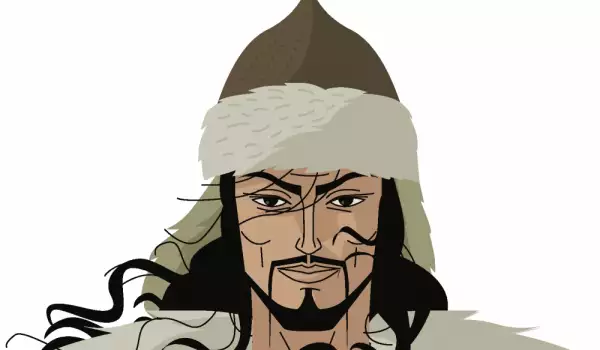
3. Attila kills his brother
After several major battles, the Huns returned to the Alfjöld plain. The information about the events that happened there is not complete, but according to Roman chroniclers, it was there that Attila killed his brother Bleda in order to get all the power of the Hun Empire.
4. Attila and the women
It is believed that in the year 450, the sister of the emperor of the Western Roman Empire - Honoria, herself sent a ring to Attila with a letter in which she asked for help from the Hun leader, as she was about to have an arranged marriage with a Roman nobleman. Then Attila already had not one but several wives, but he thought about the girl's request. He thought that if he married her, he would have power over half the Western Roman Empire.
In the end, the marriage did not take place, because she failed to persuade her brother and he forced her to marry the Roman. Of course, Attila did not accept the cancellation and made two marches on Rome, because of the girl.
5. A single defeat
Throughout his reign, Attila suffered a single defeat, which occurred in 451, when an army of 200, 000 Hunnic warriors marched into Gaul. Then, however, the Romans allied themselves with the Visigoths and together they faced the Huns. It was one of the bloodiest battles known in history, in which Attila also fell. He withdrew the soldiers, but it was only a virtual truce, as the warrior attacked Rome again just a year later.
6. Attila led a modest life
Although legend tells that Attila sought to accumulate ever greater wealth and gold, this was not quite the case. Yes, the warrior took care of his people, serving them food in silver dishes, but he himself did not eat in one. Attila ate from a wooden plate and only meat. The cup he drank from was also made of wood. He did not demonstrate his greatness, he lived modestly.
7. Does not die like a warrior
Although the circumstances surrounding his death are not entirely clear, there are reports that he died during his first wedding night with his second wife, Ildiko. They got married in 453, the wedding was in Attila's palace and everyone had fun. The next morning, however, he never appeared and the servants were forced into the bedroom. There they found the dead body of the warriot, next to which his new wife was standing, crying and screaming at the top of her voice. They found no wounds on his body, but his nose was bleeding. Some thought that it was Ildiko who killed her husband, others that the death occurred, because of the excessive consumption of alcohol the night before.
8. The place of his grave is not known
Attila's grand burial is legendary. He was buried in as many as three coffins - iron, silver and gold. The tomb in which he was placed was filled with weapons of enemies. A bunch of jewels and precious stones were placed next to the casket. All who prepared and participated in the funeral, however, were killed, so that they could not reveal the place of the grave.
